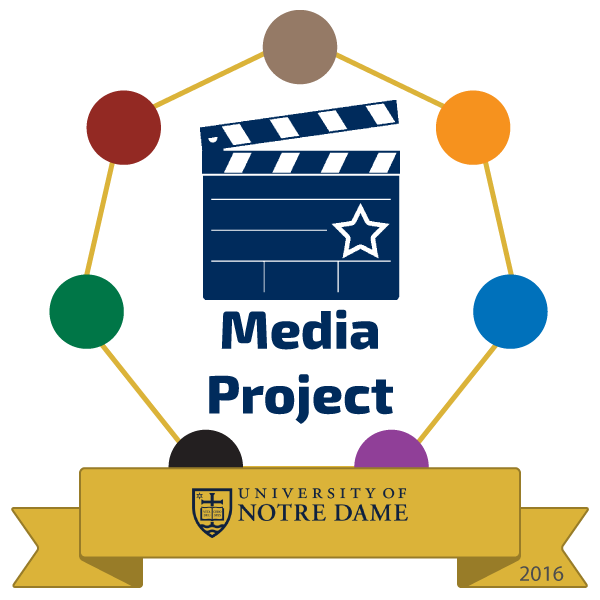Learn
After earning this badge, you will be able to
- Use backwards design to make teaching and learning more effective
- Develop an assignment where students create media
For the project badge you will use "backward design" to develop an assignment where students create media.
To set the stage, READ
- Expanding the Concept of Literacy by Elizabeth Daley.
- Why Backward Is Best from Understanding by Design by Wiggins and McTighe
And WATCH the video below
Helpful Resources
- Student Learning Goals (Washington)
- Bloom's taxonomy (Queensland)
- Rubrics (Carnegie Mellon U)
- Authentic Assessment (Grant Wiggins)
- Evaluating Media Projects (UT Austin)
- Understanding by Design (book by Wiggins and McTighe)
Reflect
Reflect on what you learned and make some notes for later writing. These prompts may help:
- It's important for students to know ...
- I will be able to use these ideas in ...
- Now that I know ... I will do ... differently
- In the Daly article ...
- I have (never) used backward design ...
Apply
GET STARTED
- Choose Options from nearly twenty genres listed in the Remix Gallery. Try to identify two or three likely assignments.
- Consult a Specialist before making a choice and getting down to details. This will help you focus and avoid taking on too much, as well as learn about resources. Email Chris Clark a couple of dates and times when you are available for half an hour (try to allow a week of lead time).
DEVELOP ARTIFACTS
Plan out the assignment in three stages, following the backward design model:
- GOALS - articulate at least two learning goals: one for subject matter and one for media literacy.
Try to specify behaviors you can observe. Help establish a connection with assessment by using verbs such as apply, analyze, identify, compare, or critique.
We won't pretend to tell you what's important in your subject area, but this can help with the other goal - Six Generic Learning Goals for Student Media Projects. The goals should read like this:
After successfully completing the assignment, you will be able to use (what you learned) to - (DO something related to the subject)
- (DO something with the medium)
- RUBRIC -
develop one online with iRubric (see the video at right).
You will need an account. Make sure that access to the rubric is "Public."
Include your learning goals, with three levels of performance for each. You may also choose to attach points to the levels, for purposes of scoring.
Don't reinvent the wheel; here are some Criteria for Evaluating Student Media.
Save a screen capture of your rubric.
- DELIVERABLES - A deliverable is an object (tangible or intangible) that a producer delivers to a customer at a certain point during the course of a project.
Frame the stages of your assignment as two or more deliverables.
To get you started, here's a List of Generic Deliverables.
Estimate the amount of time (minutes or hours) required for each item and include a completion date.
You can help students become more media literate by organizing along the stages of professional media production: Pre-production, Production, and Post-production. The video at right explains the stages in the context of making a film.
DO IT YOURSELF!
Complete the assignment and create a product, following the parameters you laid out. Do what you would expect students to do. Don't forget to use copyright-friendly materials and cite your sources!
Reflect
Write a reflection of at least 250 words.
Include the following in your reflection:
Expanding Literacy - a specific reference to Elizabeth Daley's ideas
Process - backward design
Techology - the tool(s) you used
Connections between this badge and another/others that you earned
Link - at least one resource, article, website, etc.
These prompts may help:
- I chose ... for my project because ...
- I will be able to use these ideas in ...
- The ... stage of backward design was [easy/difficult/...] because ...
- I was able to apply ... from the [tools or pedagogy] badge
- An aspect of the activity that I really enjoyed was ... because ...
- When I applied my rubric to my own work ...
- My experience designing the student media activity was ...
- I had never tried ... , and it ended up ...
- Now that I know ... I will do ... differently
- Creating the sample project was [easier or harder] than expected because ...
- I had already had a relevant experience when ...
- I have already used ... to ...
- I expect to ... in order to learn more about ...



 See who has this badge
See who has this badge